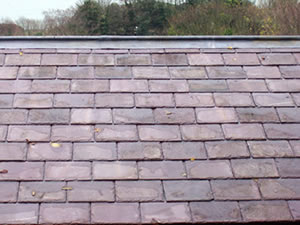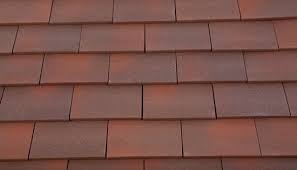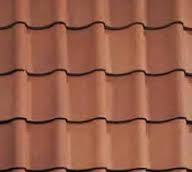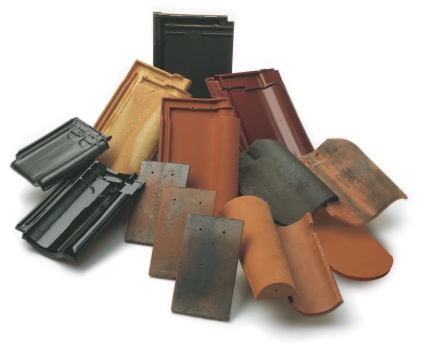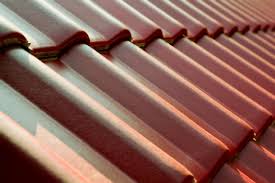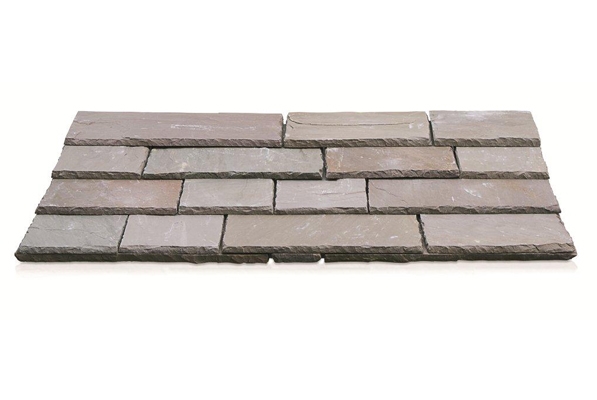Roof Tiling
Information Guide by DLE Roofing, Woking, Surrey
Roof Tiling Surrey, Woking & Guildford
There are many different types of roof tiles which are made from various materials and come in a variety of shapes and sizes, all of which come in a large range of different colours and finishes.
To help get your head around the all these options it’s worth understanding a little about roof tile design. Most roof tiles available today have evolved from just four original types of roof covering that were first introduced hundreds of years ago and still remain popular today.
Slate Roof Tiling Surrey
Thin rectangular sections of quarried metamorphic rock that come in varying sizes and thicknesses. (please see my section on Roof Slating),
Plain Tiles
Small rectangular sections of clay with a smooth or sanded surface finish.
Pantiles
A distinctive clay tile with an ‘S’ shaped profile.
Roman Tiles
Similar to a Pantile, but has a cross section that is flat with a small roll.
Choosing a roofing material is a key decision when building or renovating a home.
Your roof tiles not only have to fulfil the role of forming a watertight layer, keeping your home dry, but also need to look good from the moment they’re installed, and for decades to come.
It’s a lot to ask of one material, isn’t it? So specifying the right product is an important decision, and one likely to be governed by a number of factors.
Choosing between slate, clay tile or even stone roofing could be dictated by the local planning authority who require it to be in keeping with local vernacular; they may even need to approve samples before giving the go ahead.
Both the pitch (the angle at which the roof slopes) and the roof design are key factors.
Clay tiles are capable of performing down to pitches as low as 15° (depending on the type of clay tile) whereas slates can only perform down to 25°. Interlocking slates or tiles in manmade materials such as concrete or fibre cement can offer an alternative on low pitches too.
All this needs to be considered at the design stage as a low or steep roof may not marry up with the material you hope to use.
Another key area to investigate when choosing a roof covering (which makes up to 40% of the façade) is whether it will look ‘right’ with the wall cladding and the joinery.
With all these factors to consider, it’s easy to see why choosing the right product is important early on.
Clay Tiles
They’re synonymous with rich red roofs, but the beauty of clay tiles lies in the array of shades, not to mention profiles and finishes on offer. From burnt oranges and terracotta to browns; there’s also option for a blend of different shades.
When it comes to building a period-style home or replacing old tiles like for like, the UK is also fortunate to have a number of manufacturers who still offer handmade roof tiles made in the traditional way. But be careful not to confuse these products with those that are ‘handformed’.
The difference is that true handmade tiles are manufactured by throwing clay into a mould and cutting off the back with a wire, then the nibs and nail holes are formed by hand, so the product is produced entirely by hand. Handformed tiles are produced with an extruded blank which is then manipulated by hand at the end of the process to give the character to the product.
No two handmade tiles are identical, with an ever-so-slight variation in shape, colour, thickness and size emulating those on century-old roofs. Choose tiles which have been ‘pre-aged’ for a weathered look.
Not all handmade clay tiles, nor machine-made clay tiles for that matter, are made in the UK either. There’s some fine imported products out there. Whatever product you choose, ensure there’s a good guarantee of many years.
Profile and finish
The surface finish is also important to the overall look. In the south, sandfaced tiles are generally more common; while smoothfaced feature in the Midlands and north. A sandfaced finish can lend to a rustic, aged look, but tends to weather faster; smoothfaced finishes encourage surface run-off more readily and provide a slippery surface which helps prevent mosses from growing.
Different profiles are common throughout the country, with plain tiles most prevalent.
S-shaped pantiles are often seen in the east and in Scotland too, while Roman tiles, which feature a double or single alternating roll and flat, are a common sight in the south west of England. It’s a good idea to either stick with plain tiles or a profile common to the vernacular.
Stone Roof Tiles
If you’re repairing a period home (particularly if it’s listed or within a protected area) or building a new traditional home where roofs in the vernacular are predominately stone, then you may be required by the local planning authority and/or conservation officer to follow suit.
To some extent, the very fact that you need to source stone slates from the local quarry (there’s a comprehensive list of these on the Stone Roofing Association’s website: stoneroof.org.uk) can make the specification an easier process.
The task becomes more complex however when trying to match like for like on an old roof and the original quarry has ceased business; meaning you’ll have to source a stone from another local quarry.
Stone for roofing is typically a local form of limestone in the Cotswolds, the Purbeck district of Dorset and areas of Somerset, for example, or a type of sandstone in parts of Caithness, Cumbria and Hereford.
It’s not just the rock type which varies from region to region, by the size, thickness, how the edges are finished/dressed too. It’s an expensive option, which will require experienced skills to lay, but its none-the-less a very attractive look. Your local conservation officer should be a good source of knowledge on the vernacular stone, but English Heritage and the Stone Roof Association also provide some great information on the subject.
Questions or Advice
If you have any questions or would just like some advice, feel free to contact me anytime. Please fill out your details below and I will get back to you as soon as possible.
Or you can call me on 07712 269 441 or send an email: Contact Info
All Rights Reserved | © 2016 DLE Roofing, 56 High Street, Old Woking, Surrey GU22 9LW

